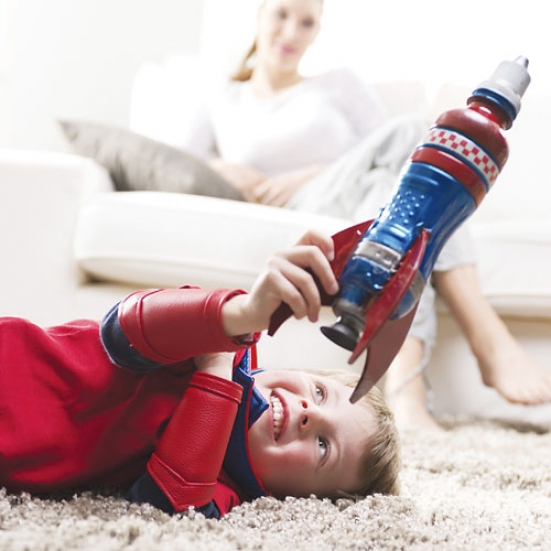TOY SAFETY
Worth checking that list twice

As the holidays draw near, parents are making their lists and checking them twice, and for those with younger children (both naughty and nice), choosing the best toys can often mean choosing the safest toys. While many children may want the most popular or flashy products they see on TV, parents should bear in mind a few guidelines before making any purchases to ensure the safety of their children.
The U.S. Consumer Product Safety Commission has a set of regulation standards manufacturers must follow so that hazardous toys aren’t sold, but it’s the responsibility of parents and gift-givers alike to be aware of the dangers some items may possess.
For starters, the CPSC suggests to choose toys with care. Pick products that are suitable and relatable to the child’s age, interest and skill level – including physical, mental and social skills.
When choosing any toy, be sure to check for quality and durable construction and design. In addition, be aware of and follow any warning or safety labels. Look for age recommendations and other safety labels such as “flame retardant/flame resistant” or “washable/hygienic materials” on stuffed toys and dolls.
For toys appropriate for all ages, the CPSC lists a number of standards including: no shock or thermal hazard in electric toys, no toxic materials on or in the toy, art materials should be non-hazardous, and all toys or games with latex balloons should have labeled warnings of their choking and suffocation hazards associated with pieces of uninflated balloons. More children have suffocated on uninflated balloons and pieces of broken balloons than any other toy, according to the CPSC.
While there are specific toys that are best suited for only specific ages and developments, there are many qualities of different products to be vigilant of, according to the CPSC.
Sharp Edges – For children younger than 8, toys should not have any sharp glass or metal edges, and even with edge-free items, parents should be wary of any pieces that may break off exposing a sharp point.
Small Parts – Under the Consumer Product Safety Act, the law bans small parts in toys for children under the age of 3. This includes any small, removable items such as eyes or noses on stuffed animals.
Loud Noises – Some cap guns or noise-making guns can produce sounds that may be damaging. Be sure that these are never set off closer than one foot near the ear or indoors.
Cords and Strings – Toys with long strings or cords are not always appropriate for infants or small children because of the danger of strangulation.
Propelled Objects – You’ve probably heard it before, and it remains to be true, sometimes you really can poke an eye out. Projectiles – guided missiles and similar flying toys – can be a danger to the eyes. Children should never be permitted to play with sporting or hobby equipment that has sharp points. Arrows or darts used by children should have rubber suction cups or soft point tips to prevent injury.
Electric Toys – These types of toys should follow strict mandatory requirements for maximum surface temperature, electrical construction and prominent warning labels. Electric toys that have heating elements are recommended for children 8 and older, and children should always be taught how to use the toys properly and under adult supervision.
Infant Toys – Rattles, squeeze toys and teething toys should be big enough that the child cannot swallow it and have the toy get lodged in their throat.
A critical point drawn out by the CPSC is that all toys are not for all children. Just as important as choosing the appropriate toy for the right child is keeping that toy out of reach from younger or unsuitable children. This can be done through the parents, as well as teaching older children how to keep their younger siblings safe by putting their things away.
The 2013 CPSC Toy-Related Death and Injury Report estimated there were more than 250,000 toy-related injuries in U.S. emergency rooms. Seventy-three percent of those injuries occurred in children younger than 15 years of age, and 96 percent were treated and released.
As the annual gift-giving holidays approach, those in the market for children’s toys should be conscious of to whom the gift will be given.
Age, ability and interest should all be considered, as well as the quality of the product in question. For more information on safety standards, toy-related injury statistics and age-appropriate gift ideas, visit www.cpsc.gov.
